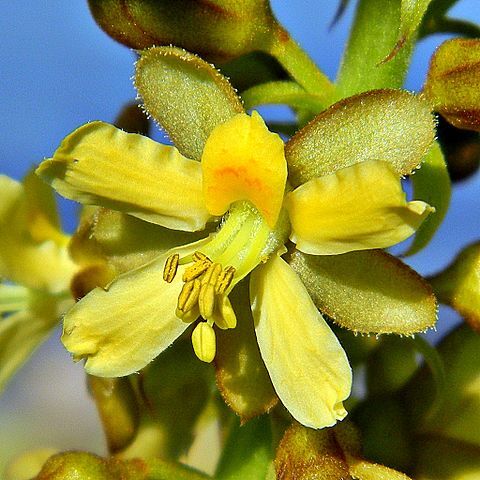Leaves bipinnate, with paired pinnae, eglandular; leaflets opposite; stipules minute to conspicuous and leafy.
Shrubs or small bushy trees, spreading or scrambling, usually covered with straight or hooked prickles.
Seeds usually 2–4, hard, globose, ovoid or oblong-ellipsoid, with transverse fracture lines.
Flowers in terminal and supraxillary racemes or panicles; bracts caducous or persistent.
Pod compressed, thick, rounded, rigidly chartaceous, often spiny.
Sepals 5, almost equal, the lowest one somewhat boat-shaped.
Stamens 10, not exceeding the petals; filaments pubescent.
Petals 5, subequal, the uppermost somewhat modified.
Ovary often spiny; stigma terminal.
Hypanthium shallow.
